How to remove puffs on clothes without making things worse?
Content:
A hook in a visible place gives even a new item a sloppy look, and can also turn into a hole or arrow. Fortunately, removing puffs from clothes is quick and easy. To do this, you only need a sewing needle and another 5 minutes of free time. The main thing is not to rush and follow the rules exactly. For dresses, trousers, and different types of fabrics, the technique for removing puffs is slightly different.
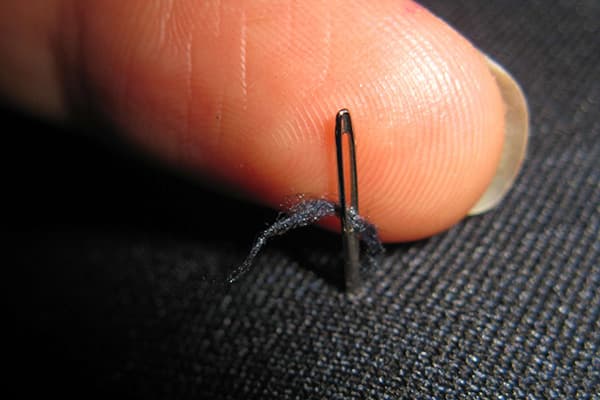
How to remove snags - general principle
Tights can appear on any fabric, but this problem occurs especially often with delicate, thin and lint fabrics. The threads in the weave lie loosely, so they catch easily. As a result, one thread is pulled out and forms a loop. It is important not to cut or tear it.
There are 2 ways to remove the puff:
- pull the thread to the wrong side;
- press it into the fabric, removing excess tension at the edges.
The second option is preferable. Simply hiding the tie on the wrong side does not solve the problem of thread tension. The fabric seems to shrink, and the clothes no longer fit as perfectly as before. To remove the hooks, you need to put the elongated threads in place.
Instructions for eliminating puffs
The first step is to find a suitable place to remove the puffs.The threads in the fabric are usually very thin, and you will need to clearly see the hook loop.
Convenience is equally important. It is impossible to remove the hook by weight - this way you risk breaking the thread and completely ruining the product. That's why:
- Place your clothes on the table.
- Provide good lighting.
- Arm yourself with a thin sewing needle and a magnifying glass if necessary.
- Try gently tugging on the fabric, smoothing out the path the snag has created.
- If the thread does not fall into place, carefully pry it up 3–5 mm from the tightening, pulling part of the hook loop.
- Step back again and make a small loop.
- Loosen the thread, moving from the hook to the edge.
Soon the puff will disappear and the pattern on the fabric will be restored.
The most difficult thing is to identify the snagged thread. To do this, you can lightly tug on the loop. Arm yourself with a magnifying glass, then you will probably see which thread needs to be tightened.
On synthetics - chiffon, polyester, nylon
Synthetic fabrics can usually be repaired without any tools. In most cases, gently stretching the fabric is sufficient. How to do this correctly?
- Determine which thread is caught - the lobe (does not stretch) or the weft (stretches).
- Grasp the fabric, 1 cm away from the hook.
- Pull lightly in the direction of the grain threads.
- Step back 2-3 cm from the hook and pull the fabric again, stretching it towards the edges.
- Do the same in the direction of the weft threads.
- Steam the fabric with an iron. The thread will finally fall into place.
If there is a microscopic loop left on the synthetic material and you don’t want to mess with it, you can hide it from the inside out. Take a needle and thread in a contrasting color and thread it through the hook. The thread should remain in the middle. Tie a knot to secure the loop.Now pierce the fabric with a needle as close to the tie as possible and pull it inside out.
On knitwear and knitwear
On knitted items, the threads are denser and thicker, so removing the puff is not difficult:
- Take a needle with a large eye.
- Insert it into the fabric as close as possible to the pulled thread.
- Place the edge of the tie into the eye of the needle and pull it to the wrong side. If the hook is small, use tweezers to grab it.
- From the inside, grab the elongated loop with thread in the color of the product. This way the fabric will certainly not unravel.
It is very easy to remove ties on knitted clothing and knitwear using a hook with a lock. You need to “grab” the loop, close the mechanism and pull it out from the wrong side.
On the dress
In order to remove the puff on the dress, you need to pull the fabric to the sides. This must be done carefully so as not to tear the product. If there is still thread left, pull it to the wrong side and secure. The remaining traces from the tightening can be disguised with a brooch or belt.
You can remove snags yourself on almost all types of fabrics, except satin. It is better to take the satin dress to the workshop.
On trousers
The trousers can only be restored if the thread has not been pulled out. Edit it like this:
- Insert a needle with a large eye into the base of the hook.
- Place the hook through the eyelet and pull it out to the back of the fabric.
- Using small movements, stretch the fabric to the sides.
- Steam your pants with an iron.
On jeans
On jeans, the hooks are hidden from the inside out. Usually this fabric does not crawl. What do we have to do:
- Find a needle with a wide, large eye.
- Insert it into the place where the hook sticks out.
- Only the ear should remain on the surface. Insert a hook into it and pull it out inside out.
- Baste it to the fabric.
If the jeans are dark and the tie is light, you can try to return the dark thread to its place with a thin needle, prying it up and pulling it up. An alternative option is to sew an emblem in this place, do embroidery, or even deliberately tear the jeans. It's very fashionable now.
Prevention
It is unlikely that it will be possible to completely protect clothing from snags. But you can minimize the risk of their occurrence.
Prevention of puffs is as follows:
- Wash things correctly. Before washing, check the label information. For delicate fabrics, use the appropriate washing machine cycle. It is better to wash especially delicate items by hand. You should also use soaking and aggressive chemicals to a minimum. Improper care will cause the fabric to wear out quickly and increase the risk of snagging.
- Handle wet clothes with care. When wet, the material becomes especially vulnerable. It is unacceptable to twist things too hard or dry them with an iron.
- Store delicate items and expensive clothes in a case. It happens that puffs appear right in the closet from other clothes. They can be left behind by locks, brooches, rhinestones. The cover will protect your things from adverse external influences.
- Use conditioner when washing. It creates a protective film that improves the wear resistance of the fibers. Having lost their integrity, “fluffy” threads cling much faster than strong and smooth ones.
Almost any kinks can be repaired. The larger the threads, the easier it is to do this. Usually repairs do not take much time. On synthetics, the hooks are stretched; on knitwear, they are removed with a hook or a needle. If you doubt your abilities, you can take the clothes to the studio.They undertake to correct even complex defects.
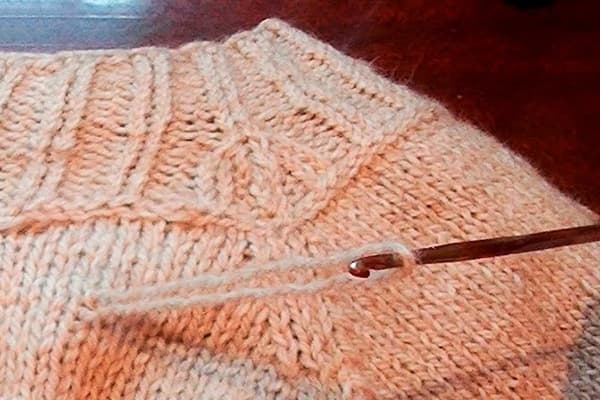
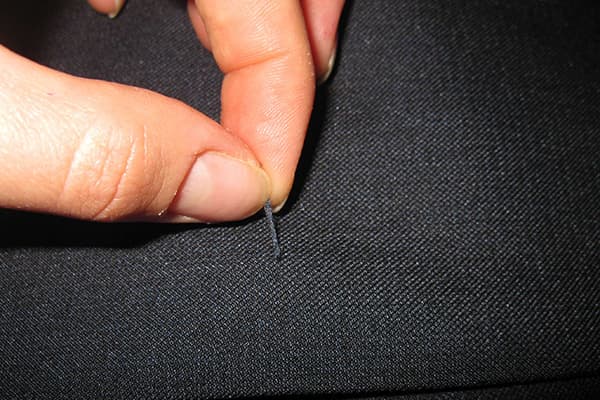
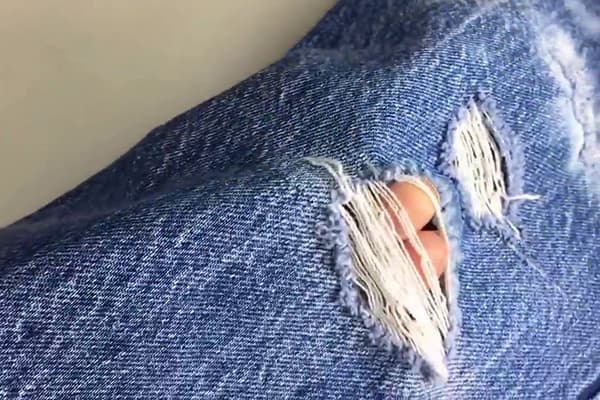
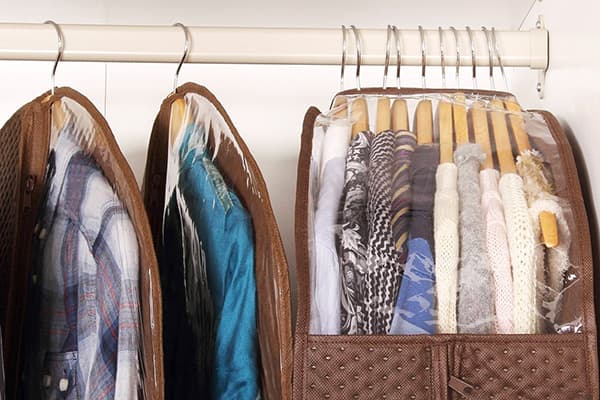
Thank you! Saved my favorite sweater!!!